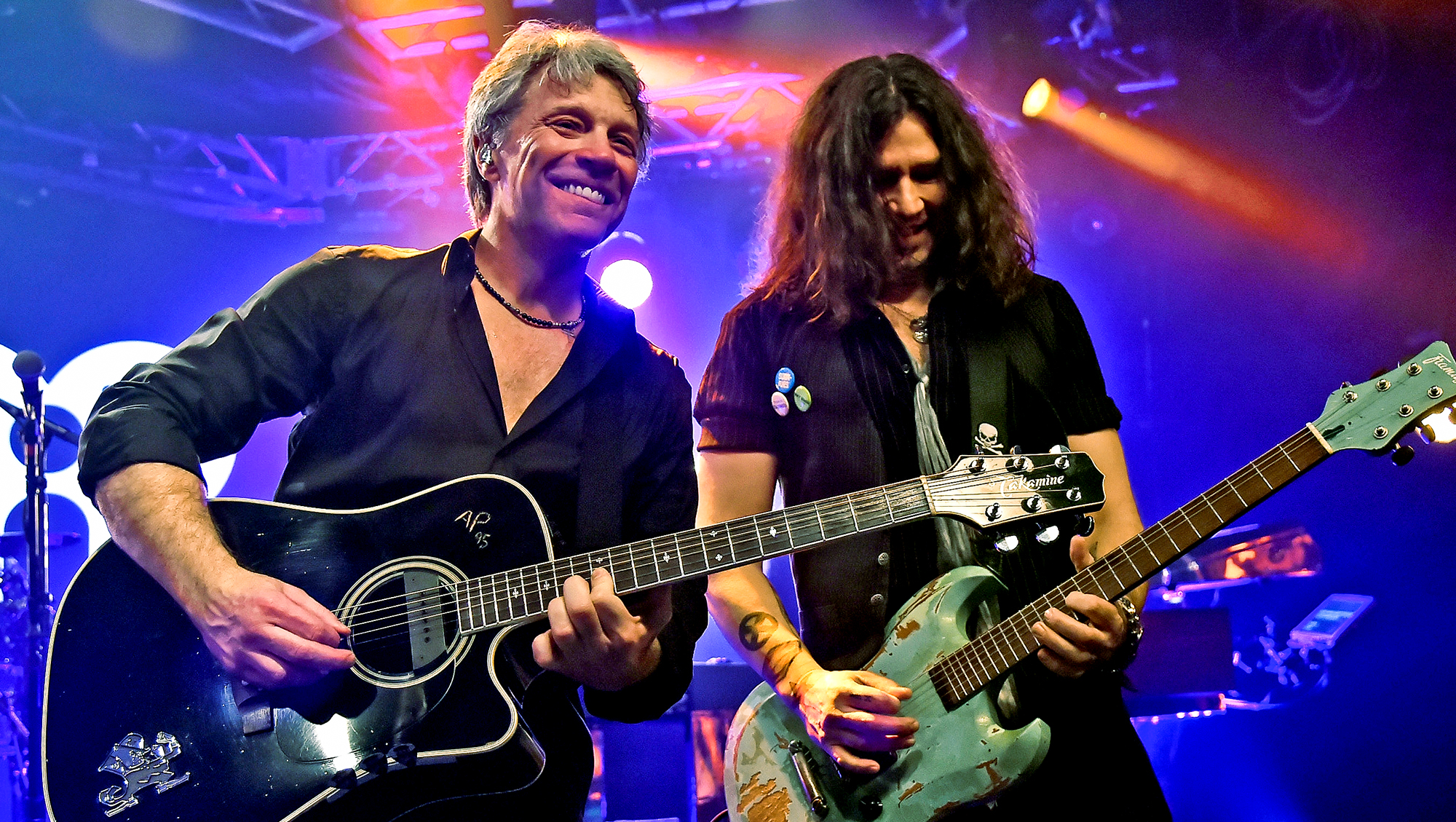“He was an angel playing with the Prince of Darkness and I was just a kid. I was possessed — and obsessed.” Jim DeCola explains how he modded Randy Rhoads’ polka-dot V backstage just minutes before showtime
He was so busy working on the guitar that he missed the support band. But he finished in time to witness an iconic rock moment

Jim DeCola was just 19 years old in 1982, when Eddie Van Halen and Randy Rhoads were the world’s hottest guitar players. He would grow up to become Gibson’s longest-serving master luthier.
But on January 24, 1982, DeCola was just a fresh-faced upstart taking his colleague’s lunch orders when the phone rang. It would prove to be a life-changing call, but initially he thought it was a prank.
“I get the phone call and it’s some guy with a British accent, and I could barely understand what he was saying,” DeCola tells Tone Shop Guitars. It was Ozzy Osbourne, but the luthier had no idea. “I can barely make out Ozzy Osbourne and thought it was just somebody pranking me. And then he said, ‘No, no, Bruce Bolen mentioned I should call you.’
"So then I’m like, 'This is for real.' ”
Bolen was on the marketing team at Chicago Musical Instruments (CMI), which owned Gibson at the time, and his recommendations carried weight. He had good reason to have faith in DeCola. The luthier was three years into the job and had shown his skills fixing tremolo units. Now, Randy Rhoads needed his help.
DeCola traveled to the Rosemont Horizon (now the Allstate Arena) in Illinois, where Ozzy and his band were performing that night. He was promptly presented with the Rhoads' unmistakable polka-dot Sandoval V electric guitar and proceeded to take its tremolo apart.
“What I used to do,” he explains, “was disassemble the tremolo, and I would counter-sink the block and the plate on each side and then de-burr the saddles. Then I would put the screws for the vibrato in a hand drill, and I had a triangle file, and I would file a little notch so it would pivot like a Floyd Rose.”
All the latest guitar news, interviews, lessons, reviews, deals and more, direct to your inbox!
It's worth noting that, back in ‘82, DeCola had never laid eyes on a Floyd Rose bridge, championed for its ability to pivot both ways, as opposed to the more limited whammy-bar actions of Fender guitars. But he’d come across the two-point tremolo system Leo Fender had created for G&L, similar to the unit employed on contemporary Strats.
Having already tested his methods on Stratocasters, DeCola brought his knowledge and experience to Rhoads’ aid. He would later employ a similar modification to the guitarist's Jackson “Concorde.”
“And then later on, Paul Reed Smith also did that hidden knife edge on his tremolo,” DeCola states.
But at the time he found himself face to face with Rhoads' Sandoval V, he says, "I was just a kid. I didn’t know. But I was possessed — and obsessed.”

DeCola finished his work in time for soundcheck. Rudy Sarzo, who had replaced founding member Bob Daisley the year prior, was on bass, and Tommy Aldridge was on drums. “They did 'Mr. Crowley' without Ozzy for soundcheck,” he recalls. “It was awesome just hearing the band by themselves doing that entire number.”
Rhoads had been impressed by the guitar’s newly solidified tuning, but with the venue's doors open and the support band already announcing themselves onstage, the guitarist had a last-minute request for the teenage luthier.

“We went back to the dressing room and he said, ‘Yeah, it stays in tune great! But if you could make it a little slinkier,’ ” DeCola details.
According to Setlist.fm, the support that night came from Starfighters, a British heavy metal band from Ozzy’s hometown of Birmingham. Their guitarist was Stevie Young, Angus and Malcolm Young’s nephew, who would join his AC/DC in 2014. But DeCola was too busy backstage to watch the opening act.
“I was in the dressing room with Randy and Rudy and Tommy,” he says. “Tommy’s hanging over my shoulder, ‘Hey, what ya doing now? Why you doing that?’ He was really cool.”
While the drummer proved a cool cat, he remembers Rhoads as “a little angel playing for the Prince of Darkness”.
DeCola may have missed Starfighters’ set, but he was able to celebrate a job well done by catching Ozzy's show. More over, he was able to witness the making of an iconic rock photograph in real time.
DeCola was standing immediately behind photographer Paul Natkin as he captured the moment when Ozzy lifted his young prodigy shredder aloft, a grin stretching from ear to ear. The photo would be selected for the cover of the 1987 live album, Tribute.
“I was like five, eight feet behind it,” DeCola beams. “I was right there!”
Bob Daisley, who is currently putting a new band together, has recently recalled how Rhoads got the Ozzy gig, and how a premonition after his audition spoke of the young guitarist's impending greatness.
Meanwhile, Randy’s sister, Kathy, has worked with MXR for the Randy Rhoads Distortion+ pedal. That saw the firm’s pedal boffins open his legendary “chip pan” pedalboard for the first time in decades to extract its tonal magic. The pedal is, fittingly, decked out in a polka-dot finish.
A freelance writer with a penchant for music that gets weird, Phil is a regular contributor to Prog, Guitar World, and Total Guitar magazines and is especially keen on shining a light on unknown artists. Outside of the journalism realm, you can find him writing angular riffs in progressive metal band, Prognosis, in which he slings an 8-string Strandberg Boden Original, churning that low string through a variety of tunings. He's also a published author and is currently penning his debut novel which chucks fantasy, mythology and humanity into a great big melting pot.



